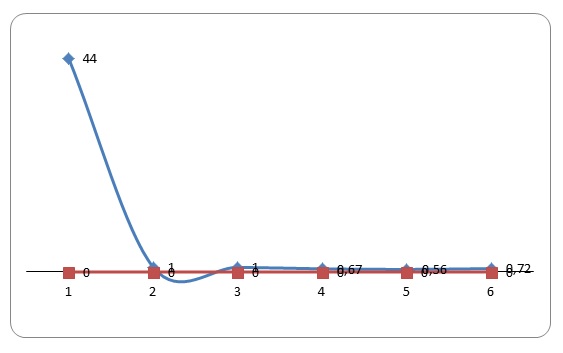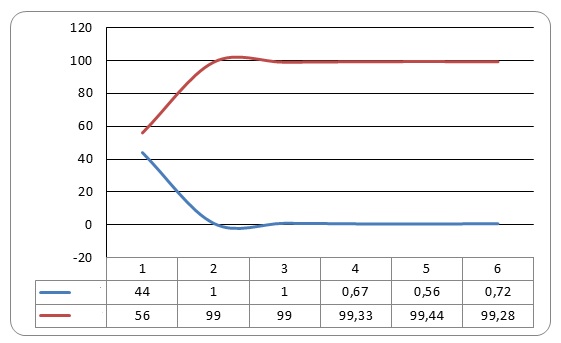Introduction
Parents face critical dilemmas when deciding on whether to deliver at home or in hospital. The dilemmas are caused by the uncertainty regarding the risk factors associated with the two delivery choices. This uncertainty has evoked controversies among health care practitioners, clinicians as well as nurses among other medical professionals. In order to determine the best choice, it is important to analyze past research which compares the two deliveries. The analysis could help in identifying the preference of most parents and provide rationale of preferring one method to another. Additionally, it could form a strong basis of making sensible recommendations in light of eliminating this controversy. This paper will, therefore, use past literature to compare the two deliveries and make relevant recommendation.
Statistical Comparison between Home and Hospital Delivery
Olsen & Clausen (2012) observes that western culture advocates for hospital delivery rather than delivering at home. Further, the authors contend that this advocacy has been accepted by the high and middle class people. However, in regions where citizens earn low income, delivering at home is viewed as a normal standard. For example, Netherlands is known for supporting home delivery where 30 percent of the parents prefer home delivery to the hospital births. In fact, Netherlands is one of the European countries that have implemented a successful home delivery system. They have fortified the arguments which contend that home delivery is as safe as hospital delivery.
MacDorman, Mathews and Eugene (2012) describe the trend portrayed by parents in USA. In 1900, almost 100 percent of the parents delivered at home while very few parents delivered in hospital. After persistent campaigns by the health care authorities, the number of home births reduced to 44 percent. On the other hand, 56 percent of the parents delivered in hospital owing to the robust campaigns. Surprisingly, the number reduced to 1 percent in 1969 and remained at this value until 1989. In 1990s, the value reduced to 0.67 percent where it fluctuated according to the graph shown in Table 1, Figure 1 and Figure 2.


In Pakistan, 65 percent of total births take place at home while 35 percent of the parents deliver in hospital (Javed et al., 2013). Parents with low level of education prefer home delivery to hospital delivery. On the other hand, parents who chose hospital deliveries have high level of education (Javed et al., 2013). In this country, 75 percent of parents who do not have formal education deliver at home while 25 percent deliver in hospital. Moreover, the authors observe that 82 percent of poor parents and 81 percent of women who are above 35 years deliver at home. Further, parents who come from urban areas are likely to choose hospital delivery while parents who come from rural settings choose home delivery (Javed et al., 2013). This implies that the demographical aspects, such as age, level of education as well as location, affect the delivery that parents choose.
Advantages of Home Delivery
First, home delivery is less expensive than delivering in hospital since it requires less professional intervention. In addition, home delivery eliminates admission cost leading to profound reduction in the cost of delivery. For instance, Ontario College of Midwives realized that a home birth, which is attended by a midwife, is less costly than hospital delivery taking place under the same conditions (College of Midwives of Ontario, 2010). The college, also, observes that poor parents in Pakistan prefer home delivery to hospital delivery owing to the low cost. Home delivery, therefore, offers a good option for parents who earn low income.
Second, home delivery eliminates unnecessary interventions which might compromise the privacy of the mother. Unnecessary interventions reduce mother’s privacy leading to postnatal depression which affects them psychologically. Further, these interventions lead to unnecessary medications which develop complications during labor.
It is, also, noted that women who deliver at home breastfeed their children for a longer period than those who deliver in hospital. When children are breastfed for a long time, they experience a faster growth rate than those who are breastfed for a short time. In this respect, home delivery facilitates faster growth of the child than hospital delivery.
According to psychology, delivering at home strengthens the psychological condition of the mother. They feel victorious, comfortable, appreciated, safe, and open since they freely interact with their family members who are intimate to them (College of Midwives of Ontario, 2010). This interaction develops comfort enabling them to enjoy motherhood rather than feel as if they are patients.
Disadvantages of Home Delivery
Home setting does not provide a safe environment for the delivery of children. In case of complication during labor, it does not allow for timely interventions. This delay could cause fatal implications including death of the unborn child and the mother. In fact, the absence of clinicians at home is probably the most significant shortcoming.
Before labor, the mother requires frequent evaluation to identify possible complications that could occur during labor. This implies that the clinicians take proactive measures in order to curb such complications before they happen. When births take place at home, it is very difficult to identify possible complications that might occur. Additionally, home births are recommended for women who undergo normal births. However, it is extremely difficult to identify normal births and distinguish them from complicated ones. In light of this uncertainty, delivering at home is extremely dangerous.
Lastly, when a complication occurs, mothers are transferred to hospital implying that they need to be transported (Wax et al., 2010). During this transportation, the mother and the child might incur fatal implications if they are not handled carefully. In most case, midwives should be involved in order to take the right measures which ensure safety.
Advantages of Delivering in Hospital
Delivering in hospital provides a safe environment for delivery since it allows for timely interventions in case of complications. This implies that the chances of losing the baby are very low. Additionally, it allows identification of possible complications that can impact on the child and the mother. This identification ensures that proactive measures are taken against such complications ensuring total safety.
Delivering in hospital is the best option for caesarian delivery since the mother is easily transferred from the birth room to operation room. In this case, it does not call for transportation which is tedious, dangerous and stressful. In addition, some babies need immediate medical care after birth. The baby can be treated easily since the hospitals have the required technological devices as compared to home setting.
Disadvantages of Delivering in Hospital
Although hospitals provide a safe environment during delivery, it does not provide a friendly environment. In most cases, the hospital environment is impersonal leading to lack of privacy and intimidation. Clinicians enter into the birth room without invitation resulting to adverse irritation and disappointments. For example, nurses cause a lot of disturbances when checking for blood pressure and temperature. Sometimes, these checkups are conducted when the mother needs total privacy and rest. Moreover, delivering in an unfamiliar environment impacts on the openness of the mother. This may require the mother to visit the hospital before the day of delivery in order to familiarize with the hospital.
Recommendations
In line with this discussion, I have realized that the most important requirements of successful child birth include privacy and safety. While home delivery provides sufficient privacy, delivering in hospital provides satisfactory safety. I will, therefore, recommend two alternatives that satisfy these two requirements. First, parents should choose a hospital that offer completely private services for delivery. This ensures that privacy is not compromised and safety maintained. On the other hand, when parents choose to deliver at home, they should involve professional midwives who can help in case of complication and transfer.
Conclusion
It is evident that European countries prefer hospital delivery to home delivery because of the safe environment which is provided. However, some European countries, such as Netherlands, advocate for home births. It is, also, noted that the level of income, age, and education affects the decision on whether to deliver at home or in hospital. Additionally, we cannot firmly decide on the best delivery. Nonetheless, I believe that hospital delivery is the best since it is safer than home delivery. In this light, I contend that privacy could be easily created in hospital while total safety might not be attained at home.
References
Javed, S., Anjum, M., Haider, A., Shiraz, A., & Shaheen, F. (2013). Correlates of preference for home or hospital confinement in pakistan: evidence from national survey.BMC Pregnancy and Childbirth, 9. Web.
MacDorman, M., Mathews, T., & Declercq, E. (2012). Home Birth In The United States, 1990-2009. NCHS Data Brief, 35(4), 84.
Olsen, O., & Clausen, J. (2012). Planned hospital birth versus planned home birth (Review). The Cochrane Library, 13(9), 456-478.
College of Midwives of Ontario. (2010). The Facts about Home Births in Ontario. Births, 3. Web.
Wax, J., Lucas, L., Pinette, M., Cartin, A., & Blackstone, J. (2010). Maternal And Newborn Outcomes In Planned Home Versus Planned Hospital Births: a Metaanalysis. American Journal of Obstetrics and Gynecology, 201(6), 203.